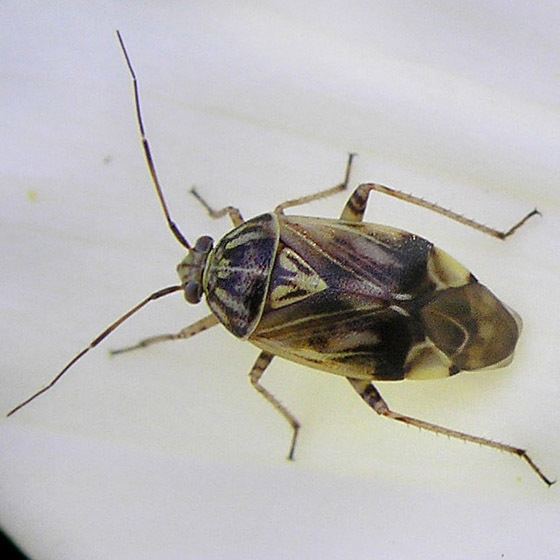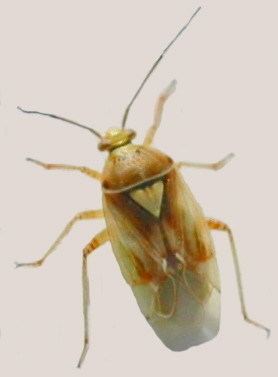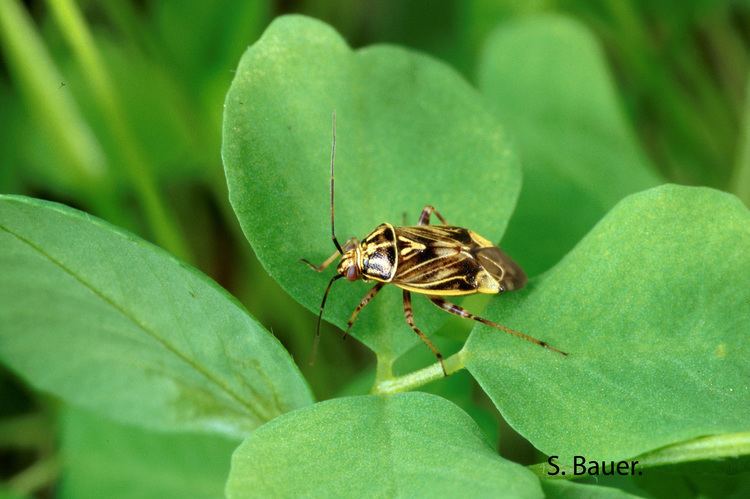Infraorder Cimicomorpha Order True bugs | Suborder Heteroptera Superfamily Miroidea Scientific name Lygus Rank Genus | |
 | ||
Similar Tarnished plant bug, Insect, Miridae, True bugs, Lygus pratensis | ||
The genus Lygus includes over 40 species of plant-feeding insects in the family Miridae. The term lygus bug is used for any member of genus Lygus.
Contents
Species

At one time, nearly 200 species were classified as genus Lygus, but most of those have since been reclassified into new or existing genera. Species within this genus include:

Description

These insects appear as small oval creatures. Adult lygus are approximately 3 mm wide and 6 mm long, colored anything in a range from pale green to reddish brown or black. The bugs can be solid shaded or mottled, and have a distinctive triangle or V-shape on their backs. Adults are capable of flight, and will often thus escape when approached. Nymphs are wingless, and being light green in color, are often mistaken for aphids. However, lygus nymphs have harder exoskeletons, are typically more active, gain spots as they age, and lack aphid cornicles.
Biology

Lygus bugs are known for their destructive feeding habits - they puncture plant tissues with their piercing mouthparts, and feed by sucking sap. Both the physical injury and the plant's own reaction to the bugs' saliva cause damage to the plant. The females insert their eggs directly into the plant tissues using piercing ovipositors, and the newly emerged nymphs are voracious consumers of plant tissue juices. Signs that a plant has been attacked by lygus bugs include discoloration, deformation of shoots and stems, curling of leaves, and lesions on the plant tissues.
Economic importance

The more well-known lygus bugs are those that have agricultural impacts. Some lygus bugs are very serious agricultural pests.
Some methods of biological pest control have proved useful against lygus bugs. For example, wasps of the genus Peristenus are parasitoids of lygus bugs; an adult wasp will inject an egg into a lygus nymph, and once the egg hatches the wasp's larva will consume the nymph from the inside out.
